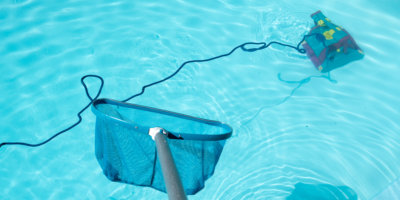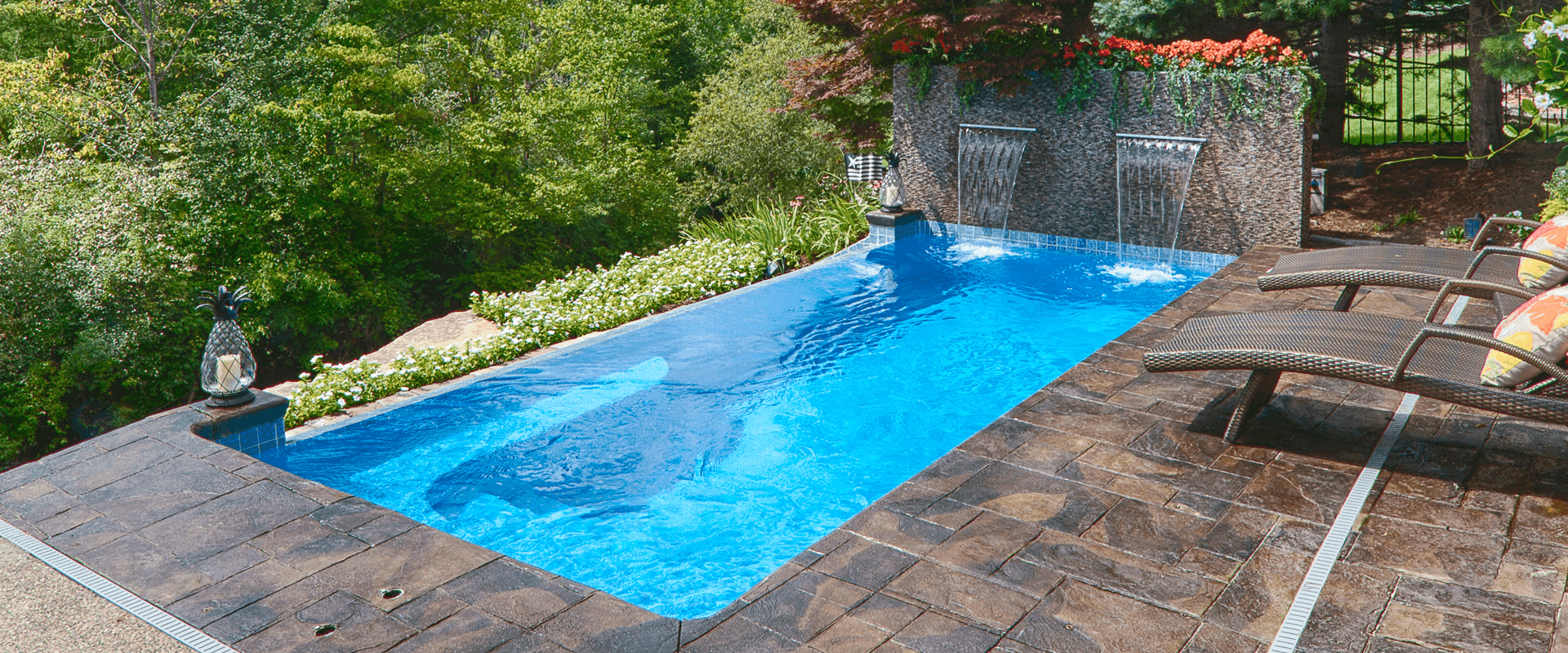877-929-7665
6 Tips to Reduce Inground Pool Operating Costs
Buyers often only look at upfront costs when pricing and comparing inground pools. However, ongoing pool operating costs can add up over the lifetime ownership of your pool. While all pool types have some of the same expenses, understanding the differences in operating costs among fiberglass, vinyl liner, and gunite pools can help you make smarter choices to keep the costs in check. From testing your water chemistry to maintaining equipment, check out our tips on reducing your inground pool costs.
 Tip 1: Test Your Pool Water Regularly
Tip 1: Test Your Pool Water Regularly
According to HomeGuide, annual pool chemical costs average $175 for a fiberglass pool, $400 for a vinyl pool, and $750 for a concrete pool. However, your actual cost will depend on the amount of chemicals you need to maintain balanced water chemistry. Trying to correct problems after you have “lost your pool” can result in extra, unnecessary expense, so test often to help maintain better control. Regularly test your water using a DIY test kit, take a sample to a pool store, or use a professional pool service for a more thorough analysis. In addition to the usual pH and chlorine levels, professionals assess a wider range of factors, such as alkalinity, calcium hardness, and stabilizer levels, ensuring that any imbalance is detected before it becomes a costly problem.
Tip 2: Add Chemicals in the Evening
To get the most out of your pool chemicals, regardless of pool type, add them in the evening or at night when the sun is down. Adding pool chemicals in the evening is ideal for all pool types to help ensure that they work optimally, extending their efficacy and reducing the frequency of reapplication. Chemicals like chlorine degrade quickly under sunlight, so evening application allows them to work overnight without UV interference, ensuring better absorption and balanced water. This timing also improves the overall effectiveness of algaecides, pH adjusters, and other treatments, keeping your pool water clear and properly maintained.
TIP 3: Keep Your Pool Clean

When you regularly backwash, skim, brush, vacuum, and monitor your pressure gauge, you’re less likely to have prematurely expensive repairs. Fiberglass pools are more algae-resistant than other pool types, so you’ll automatically save time and money on cleaning. Maintaining a clean pool improves the efficiency of your pool’s filtration system, reducing wear and tear on equipment. Costs for pump replacements, filter repairs, and other common issues vary depending on the pool type and equipment brand. Considering all pool types, HomeGuide estimates that replacing a pool pump motor averages $150 to $800, and repairing it costs $50 to $300. A new inground pool filter costs $385 to $1,600. Repairing minor issues in your heater or heating tubes can cost $100 to $300, and replacing your heater averages $1,600 to 5,200. Set reminders or regularly schedule cleaning to save money in the long run.
TIP 4: Save Water by Managing Usage and Covering Your Pool
Water conservation is a critical aspect of reducing inground pool operating costs. During the swim season, pools require refills as they lose water due to evaporation, improper backwashing, and kids splashing. On average, pools lose about two inches of water per week, up to around 2,000 gallons per month. Depending on local water rates, this ongoing cost can range from $4 to $20 monthly. Pool covers can dramatically reduce evaporation by up to 90%. They also help maintain your pool’s temperature, lowering heating costs. Monitor splashing and limit it by setting clear rules for pool play. Not only does this save water, but it also reduces the need to add and rebalance your pool’s chemicals. Follow the manufacturer’s guidelines for filter backwashing to avoid unnecessary water loss.
TIP 5: Heat Your Water More Efficiently
Heating your pool can be one of the most significant ongoing expenses, so it’s important to manage it wisely. Fiberglass pools retain heat better than other pool types due to their insulating properties, making them more energy-efficient and less costly to heat. Electric resistance heaters consume a lot of electricity, with operating costs ranging from $175 to $600 per month. Gas pool heaters quickly warm up the water, but they average between $200 to $500 or more per month to run. On the other hand, heat pumps are much more energy-efficient, costing about $50 to $150 per month, though they take longer to heat the water. Solar pool heaters use electricity only to circulate water, making them the most cost-effective at around $10 to $25 per month. Regardless of your pool heater type, set your pool heater between 78-82 degrees to maintain a comfortable temperature without overworking the heater.
TIP 6: Save Energy 3 Ways
Your pool pump plays a vital role in water circulation and filtration, so efficiently running it can save money. Consider switching to a variable-speed pump, which uses less energy than a single-speed pump and allows you to adjust the flow rate based on your pool’s needs. A timer can automatically control when the pump runs, optimizing usage during off-peak hours to reduce energy consumption. This simple addition can significantly cut down your electric bills. It’s easy to forget to turn off your pool lights, especially after an evening swim. Unfortunately, keeping the lights on when the pool isn’t in use can unnecessarily add to your electricity costs. Make it a habit to check that all lights are off before heading inside for the night. Accidentally leaving the backwash running or overfilling your pool wastes water and incurs additional heating and chemical balancing costs. Set reminders or timers when performing these tasks to avoid costly errors.
Get Your Pool Cost Questions Answered
Keeping your inground pool operating costs low is all about regular maintenance, efficient use of equipment, and smart choices. Whether you choose a fiberglass, vinyl, or gunite pool, taking proactive steps can significantly lower your ongoing expenses and keep your pool running smoothly. If you have questions about inground pool costs or are ready to take the plunge and purchase, consult a pool dealer near you.
